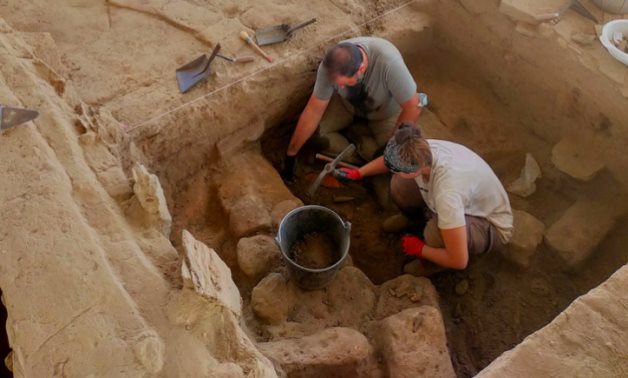
A team of archeologists excavates the Iron Age site at the Cerro de San Vicente in Salamanca, Spain in August. UNIVERSIDAD DE SALAMANCA
CAIRO – 24 November 2022: Archaeologists discovered an artifact that personified an ancient Egyptian goddess at a site dating back 2,700 years in Spain.
The gold leaf ceramic piece was discovered at the University of Salamanca. The artifact belongs to a group of antiquities including amulets, painted ceramics, and other motifs with Egyptian and Mediterranean roots, discovered by experts at the Cerro de San Vicente site in Central Spain.
Researchers believe that the artifact embodies a larger statue of the goddess Hathor, the daughter of the Egyptian sun god Ra and the mother of Horus, a falcon-headed deity in ancient Egyptian mythology, according to Art News.
The newly discovered artifact, measuring about 5 cms, was found in a three-roomed building located along with other items including a shark's tooth, necklace beads and shards of clay. A separate artifact depicting the same goddess was found in 2021 at the same location.
Archaeologists have been excavating the Spanish site near the Tormes River for three decades and the researchers leading the excavations believe that the inhabitants of the ancient community deliberately destroyed their place of residence.
Comments
Leave a Comment